When it comes to brand collaboration, there are a few things you need to keep in mind. At Vix Media Group, we have helped countless businesses push their brand to new heights through effective collaborations. This guide will discuss some of the most important factors you need to consider when planning a collaboration. By following our advice, you can create an amazing partnership that will benefit both brands involved.
How do you land brand collaborations?
The first stage is to devise a strategy. You should have a clear idea of what you want to accomplish with the collaboration and what each brand can contribute. You can begin reaching out to possible partners once you have a firm understanding of the objectives. It's crucial to locate a company that shares your values and that you think would be a good fit for collaborating with. It's time to begin the negotiation process when you've identified a few firms that you believe would be a suitable fit.
It's critical to be clear about what each brand expects to gain from the relationship during negotiations. Once both parties have agreed, you can begin working on the partnership's terms. Once the collaboration is up and going, it's critical to keep an eye on it to ensure that both businesses are getting what they want from it. If any issues arise, make sure to address them as soon as possible so that the partnership can continue to be fruitful.

What are the 4 types of brand collaboration?
A co-branded product or service. This is where two brands come together to create a new product or service. For example, Nike and Apple created the Nike+iPod Sport Kit, which allows users to track their workout progress using their iPod.
A cross-promotion. This is where two brands promote each other’s products or services. For example, A&W and Tim Hortons often promote each other’s products in their stores.
A joint marketing campaign. This is where two brands team up to create a joint marketing campaign. For example, Pepsi and Doritos have teamed up for several Super Bowl commercials over the years.
A sponsorship. This is where one brand provides financial support to another brand in exchange for marketing rights. For example, Coca-Cola is a major sponsor of the Olympic Games.
What to ask before collaborating with a brand?
Before you start collaborating with a brand, there are a few things you need to ask yourself. You can ensure that the collaboration is a good fit for both brands involved by answering these questions. What are our goals? What can we offer? What do they have to offer? Do our values align? Do we have the same target audience? What is the expected ROI? How will we measure success? What are the risks? What is the timeline?
Asking these questions before entering into a collaboration will help ensure that it’s a success. By taking the time to plan and prepare, you can create a partnership that will benefit both brands involved.
How do you know if a brand collaboration is real?
A clear understanding of the goals. Both brands should clearly understand what they want to achieve with the collaboration. If there’s no clear purpose, it’s likely not worth pursuing. A mutual benefit. Both brands should be getting something out of the collaboration. If one brand is clearly benefiting more than the other, it’s not a true partnership.
A fair agreement. Both brands should feel like they’re being treated fairly. If there’s a sense that one brand is being taken advantage of, it’s not a good sign. A shared vision. Both brands should be aligned on the vision for the collaboration. If there’s a disconnect, it won't be easy to make the partnership work. If all of these boxes are checked, then you can be confident that the collaboration is real and worth pursuing.

What are the pitfalls to avoid in brand collaborations?
Don’t enter into a partnership just for the sake of it. Make sure there’s a clear purpose and benefit for both brands involved. Otherwise, it’s not worth pursuing. Don’t underestimate the planning process. Take the time to plan out the collaboration so that it runs smoothly. Don’t forget about your brand identity. Make sure that the partnership is in line with your brand values and identity. Otherwise, it could damage your reputation.




















.png)



.svg)